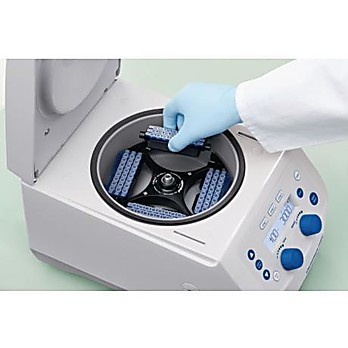Share :
How to choose the right centrifuge configuration for your laboratory
Updated On 11/14/2022
A key piece of lab equipment, the centrifuge must be chosen properly to produce accurate and effective results. When selecting a centrifuge, a variety of factors should be considered, such as size, speed, and power.
Size
The size of your sample and the chamber's capacity should be your guiding factors when picking the centrifuge's size. More samples can be processed simultaneously with a larger chamber, but a larger centrifuge will require more space, be less effective, and cost more than a smaller unit.
Speed
The speed you choose for your centrifuge mostly depends on your personal preferences. Slower speeds can be used for more intricate or delicate samples, even if a high speed will always result in quick processing times. Most of the cases, it is advised to choose a rate that is appropriate for the type of sample you are operating with and your degree of effectiveness.
Power
The size of the machine and the types of samples you are working with have an impact on the centrifuge's power, just like they do on its speed. A smaller machine might be more suitable for some tasks, but generally, the greater the system, the more powerful it will be.
This is especially true if you want to set up your lab on a limited budget or with space constraints. Additionally, bear in mind that not all centrifugation is created equal.
The most crucial factor to consider when choosing the centrifuge configuration will be the space available in the lab in general and on the bench in particular. Thus, we can decide between:
Compact or not, these centrifuges can be mounted on a laboratory table and are small. They have a relatively high capacity, are robust, and may run at 5,000 or 6,000 rpm. This kind of centrifuge is typically used in clinical biology laboratories. Some versions can be chilled, enabling the centrifugation of delicate materials like some coagulation agents.
Larger centrifuges are normally floor-standing, which is a smart choice if the lab seeks to boost efficiency and bench space. These centrifuges enable the treatment of sizable volumes or a significant number of tubes. They frequently have a high rotational speed of around 30,000 rpm and are chilled. They are quite hefty, which must be considered when installation, is a disadvantage.

Related Stories
What is the difference between spectroscopy and spectrometry?
Many spectroscopic approaches can now be implemented to characterize nanomaterials, as nanotechnology has evolved into its own unique field.
Types of Pipette
a small piece of apparatus which typically consists of a narrow tube into which fluid is drawn by suction (as for dispensing or measurement) and retained by closing the upper end
What are the different vortex mixers for laboratory applications?
A device that creates a vortex to mix two liquids in tubes of varying sizes.
Everything you need to know about measuring cylinders
Measuring cylinders, also known as graduated cylinders, are essential tools used in various scientific and laboratory settings to accurately measure the volume of liquids. They are typically made of glass or polypropylene (PP) and come in different forms such as tall form or short form.